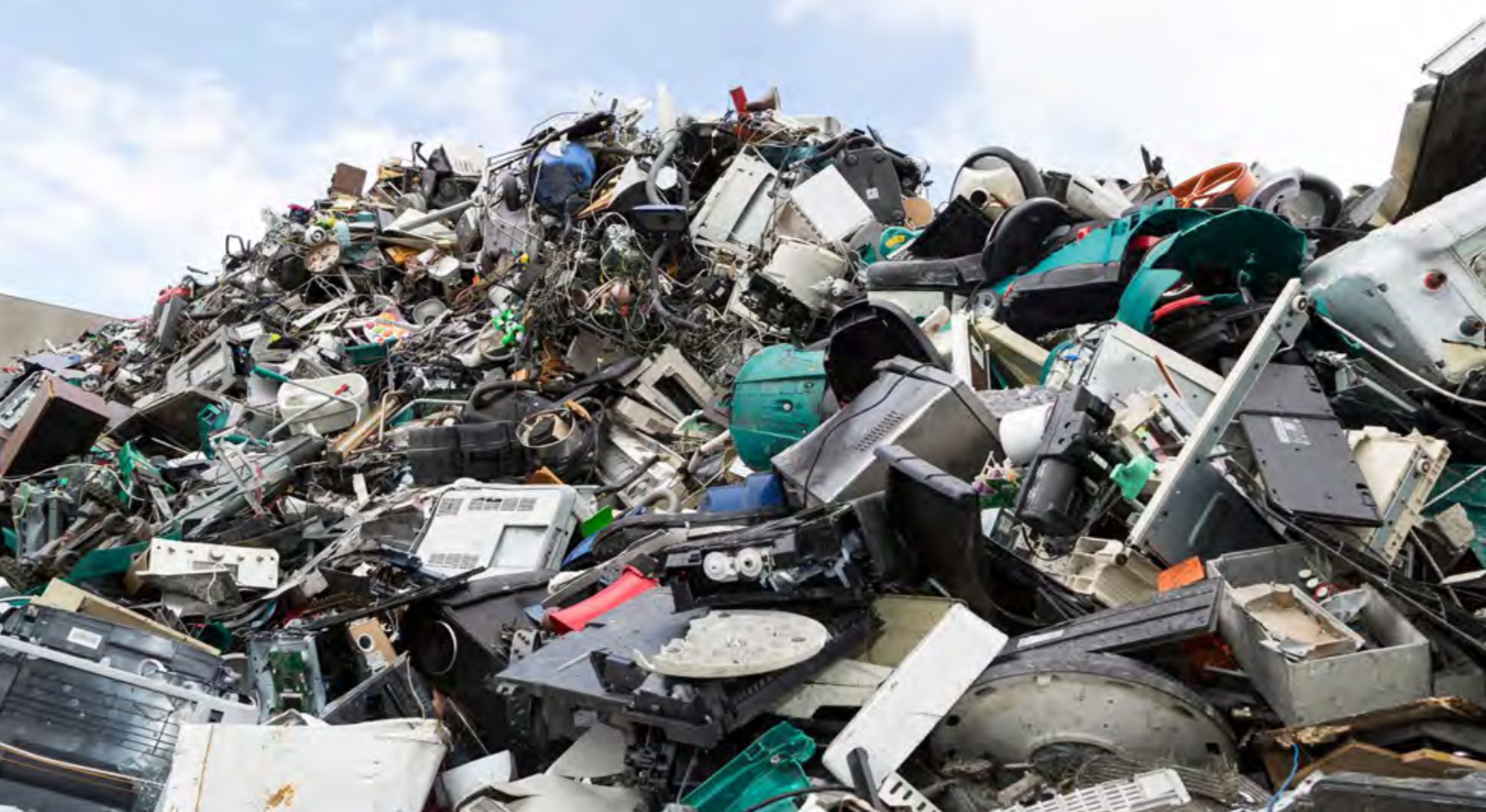Social Innovation is Key to Safe E-Waste Disposal
This article was originally published in the CKGSB’s Report: Fostering Social Innovation to Address Humanity’s Challenges
Social innovation, in simple terms, is to develop and implement practices that yield more positive outcomes for individuals and societies alike. More importantly, it is a conscious effort to try and undo a share of the enormous negative consequences that have been complementary to socio-economic progress.
A pressing need is to adopt more sustainable practices, and to focus efforts towards steadily limiting waste, in all forms, by governments, businesses and individuals. But to ensure successful outcomes, there is no alternative but to collaborate across sectors.
In terms of limiting waste, a key area that demands more attention is electronic waste or e-waste generation. Electronic devices have become commonplace. They are proven enablers. And amid the pandemic, these devices helped in continuing education or work for millions worldwide. However, when the lifecycle of that product comes to an end, very few safely dispose them. Most have no knowledge of how to dispose them and awareness around e-waste’s adverse effects is not commonplace.
Just to gauge the enormity of the problem, here is a statistic from 2019. Each human being on this planet generated 7.3kg of e-waste1 in 2019.
Electronic device ownership will only increase further.
The smartphone user base currently stands at 6.37 billion – up from 3.67 billion only five years2 ago. Estimates peg that, by 2026, there will be as many as 7.5 billion smartphone users3 worldwide. Personal computers, meanwhile, saw a huge spike in ownership in 2020 amid the shift to remote working and online learning. Over 172 million units4 have already been sold globally in 2021.
Ever since the invention of Apple’s iPhone, smartphones particularly have become indispensable for work, entertainment, study and communication. However, smartphones are only one of several electronic devices that an average household uses. In the US, for example, there was an average of 11 devices per household in 20195 itself.
Many electronic devices, meanwhile, have a fairly short lifecycle. They could either stop functioning or become obsolete, and eventually become waste.
Most developed economies already have well-established guidelines for treating organic, plastic or paper waste. But in the case of e-waste, clear disposal frameworks are lacking. Several manufacturers do offer a buy-back policy but the ‘bought-back’ items are often shipped to less affluent economies.
According to the US Environmental Protection Agency6, “An undetermined amount of used electronics is shipped from the United States and other developed countries to developing countries that lack the capacity to reject imports or to handle these materials appropriately”. The Basel Convention7 framework did outline the prohibition of this practice but a loophole exists8. Discarded electronics can be shipped to a third country by deeming the e-waste as material that can be repaired. It is a clear shifting of responsibility in terms of managing the soon- to-be waste product.
In this regard, the Electronics TakeBack Coalition9 (ETBC)—a non-profit organization—encourages the adoption of responsible practices in the e-waste recycling sector. The ETBC implores consumer electronics manufacturers to take full responsibility to not only offer products that keep sustainability at their core, but also ensure their safe disposal.
Recycling must be regulated to ensure safety and prosperity.
The bulk of e-waste recycling facilities in emerging economies, are unfortunately, very loosely monitored. As a result, while a large number of facilities are recycling electronic devices in the literal sense, they are, by no means, benefitting the environment. If anything, such crude practices are a hazard.
According to a 2019 UN report10, of the total 50 million tons of e-waste generated annually, only 20 percent was recycled using safe practices. To put this into perspective, 50 million tons of e-waste is worth a staggering $62.5 billion.
However, there is a fine line that must be tread. On one end of the spectrum, these unregulated facilities are severe environmental threats. But on the other, they generate employment for thousands who have, otherwise, no other alternative to ensure their sustenance. In Nigeria, for example, as many as 100,000 workers are employed in the informal e-waste sector11. This is an apt example of a scenario where cross-sector collaboration is needed, more so between the public and private sector waste management efforts. Collaborative efforts will ensure safer working conditions and the adoption of less harmful recycling processes.
The Nigerian administration has taken cognizance of this problem. There is now a formal waste recycling framework in effect to encourage the adoption of safe practices.
E-waste recycling also holds enormous economic potential. Take the case of China. It is estimated that the value of metals discarded as e-waste in China will be worth $23.8 billion by 203012. These metals can be retrieved at significantly lower costs than having to mine them. China has the opportunity to generate enormous wealth by participating in the circular economy, since it is both a large manufacturer and consumer of electronics. It also has environmental gains. If China manages to reach e-waste recycling rates of the EU (85 percent recycling of both mobile phones and computers), it would save 30 billion kilowatts of energy which would otherwise go into mining these metals. This also means that China could offset 22 million tons of carbon emissions.
Conscious efforts are being allocated.
In terms of successful government efforts, Switzerland has emerged a global leader in e-waste recycling. In 2019, it recycled as much as 75 percent13 of all its discarded consumer electronics. The recycling rate topped 95 percent14 for smartphones.
Switzerland is also assisting Ghana in adopting a more conscious approach to e-waste recycling. In a dubious distinction, the African economy’s Agbogbloshie landfill15 acquired the moniker of being the world’s most polluted area – ahead of even Chernobyl in Ukraine.
On a basic level, concepts like social innovation must be introduced to individuals during their formative years. Just as sports and academics are prioritized as being key to holistic development, so too are ideals that focus on being conscious global citizens.
Regardless of organic, plastic or electronic waste, the fact that they must all be discarded with caution is a critical learning that everybody must imbibe. It will, without doubt, ensure a better planet for generations to come. This primary responsibility cannot be shirked—and at the very basic level—begins with us.
This article was originally published in the CKGSB’s Report: Fostering Social Innovation to Address Humanity’s Challenges



